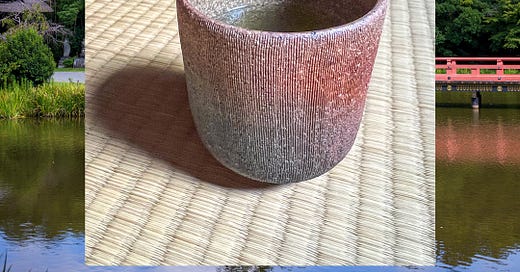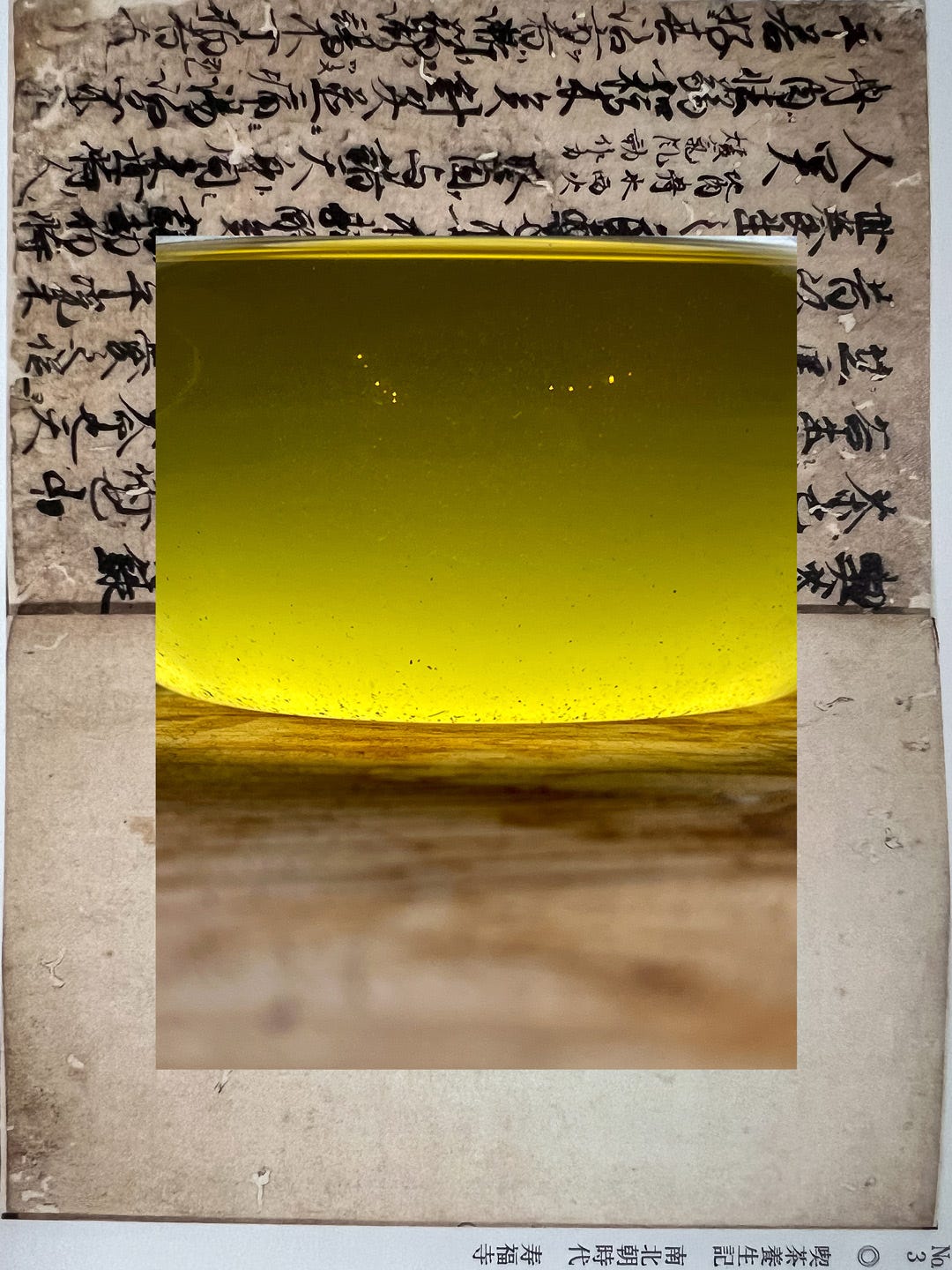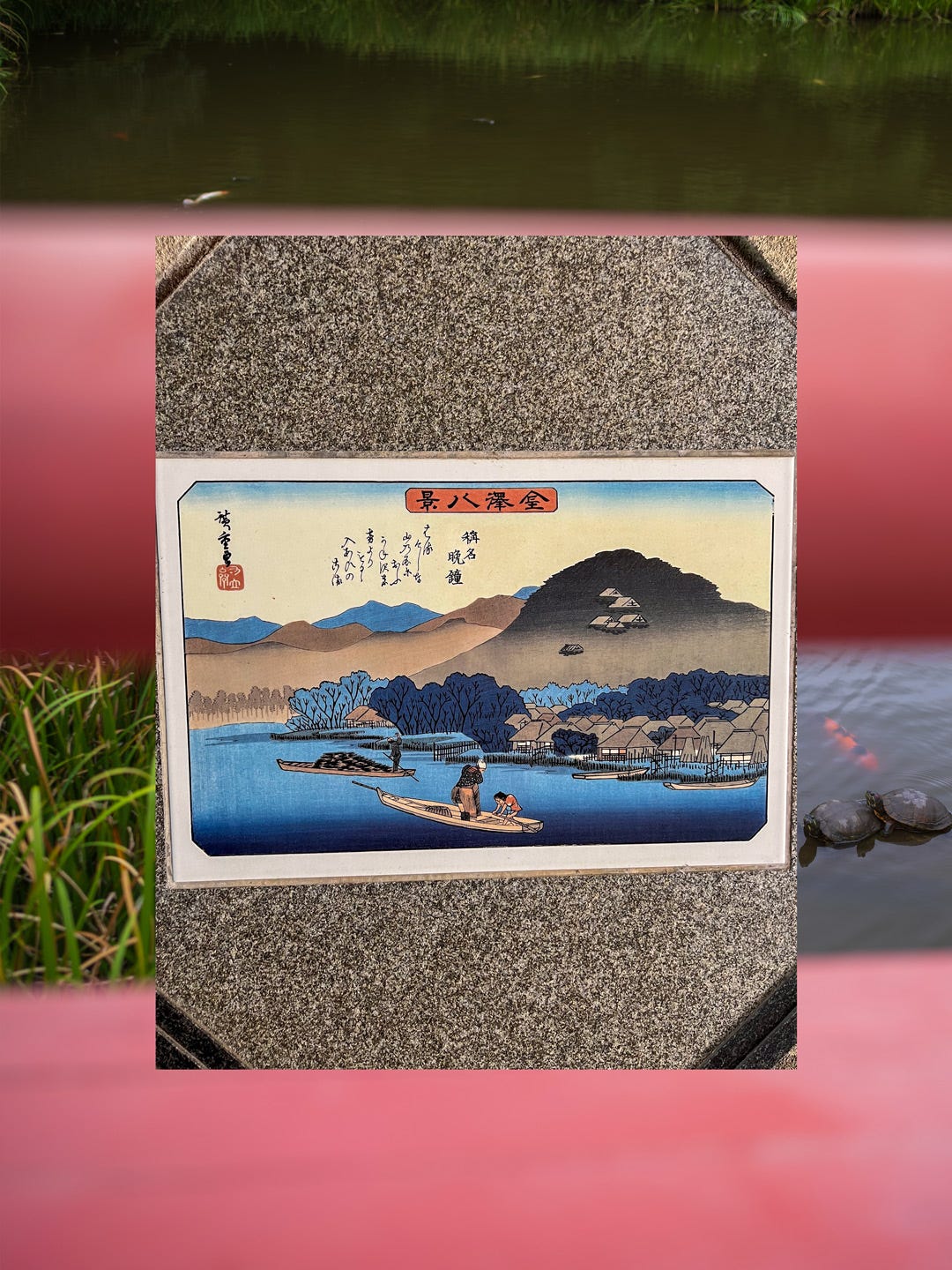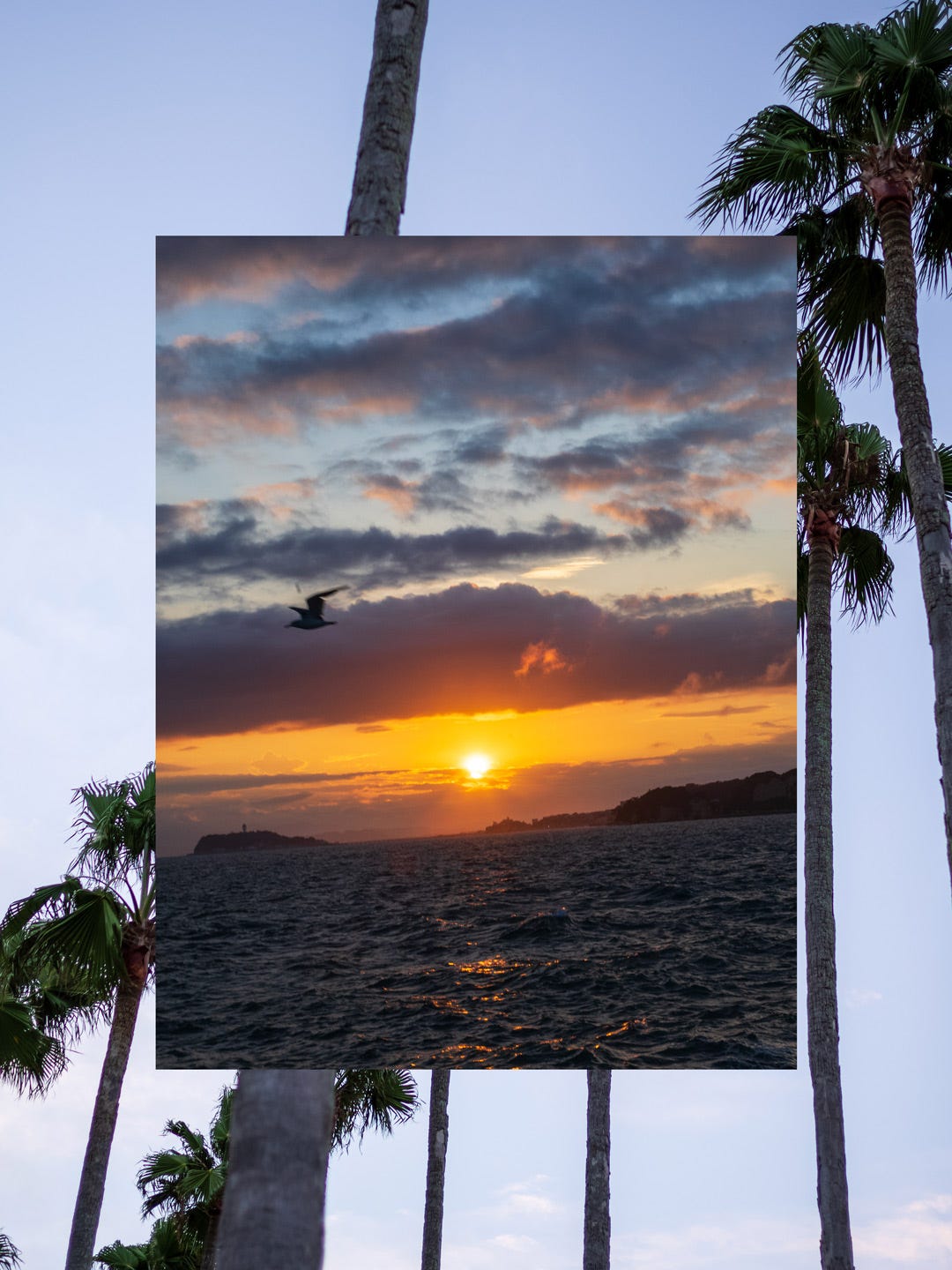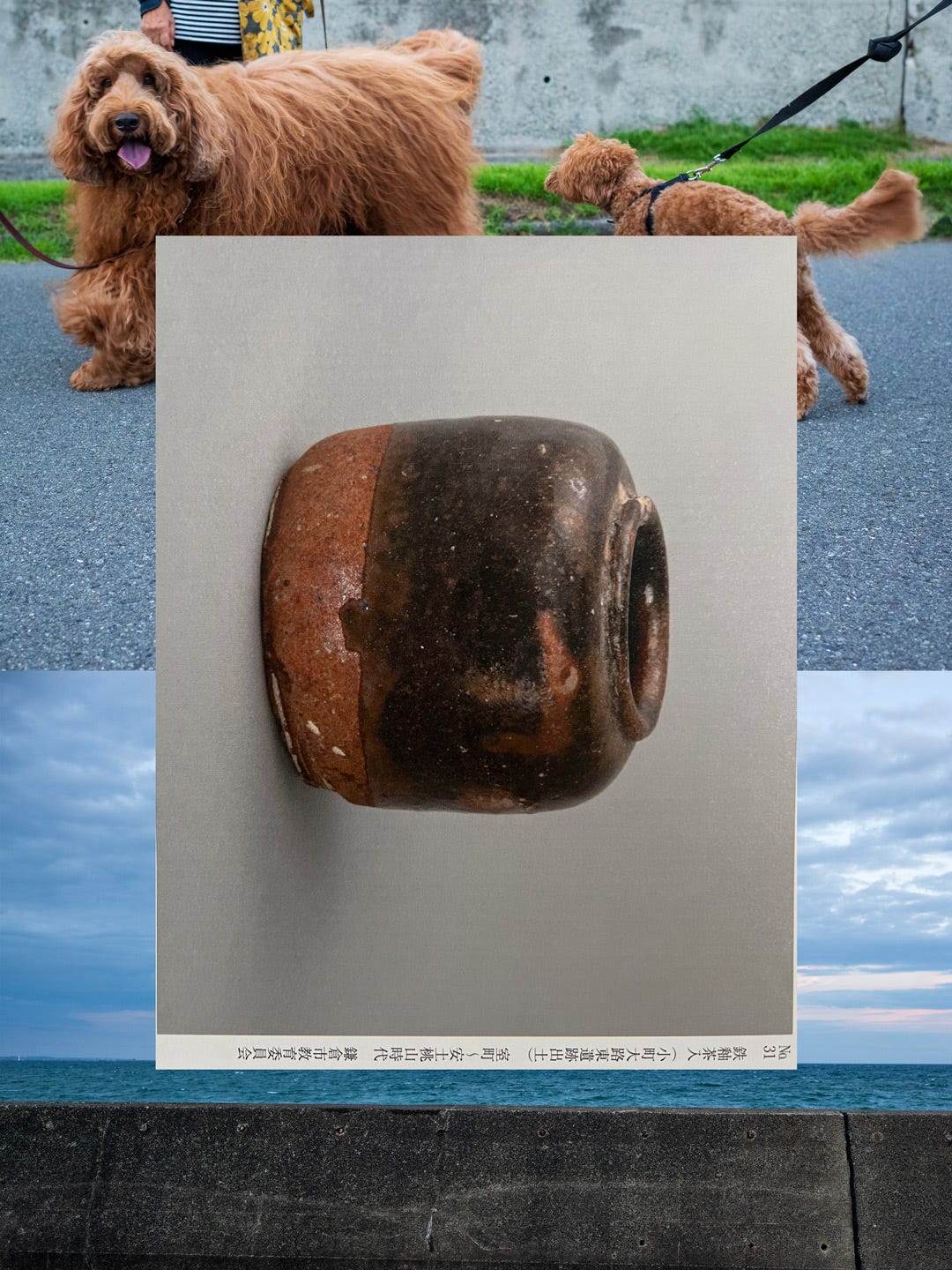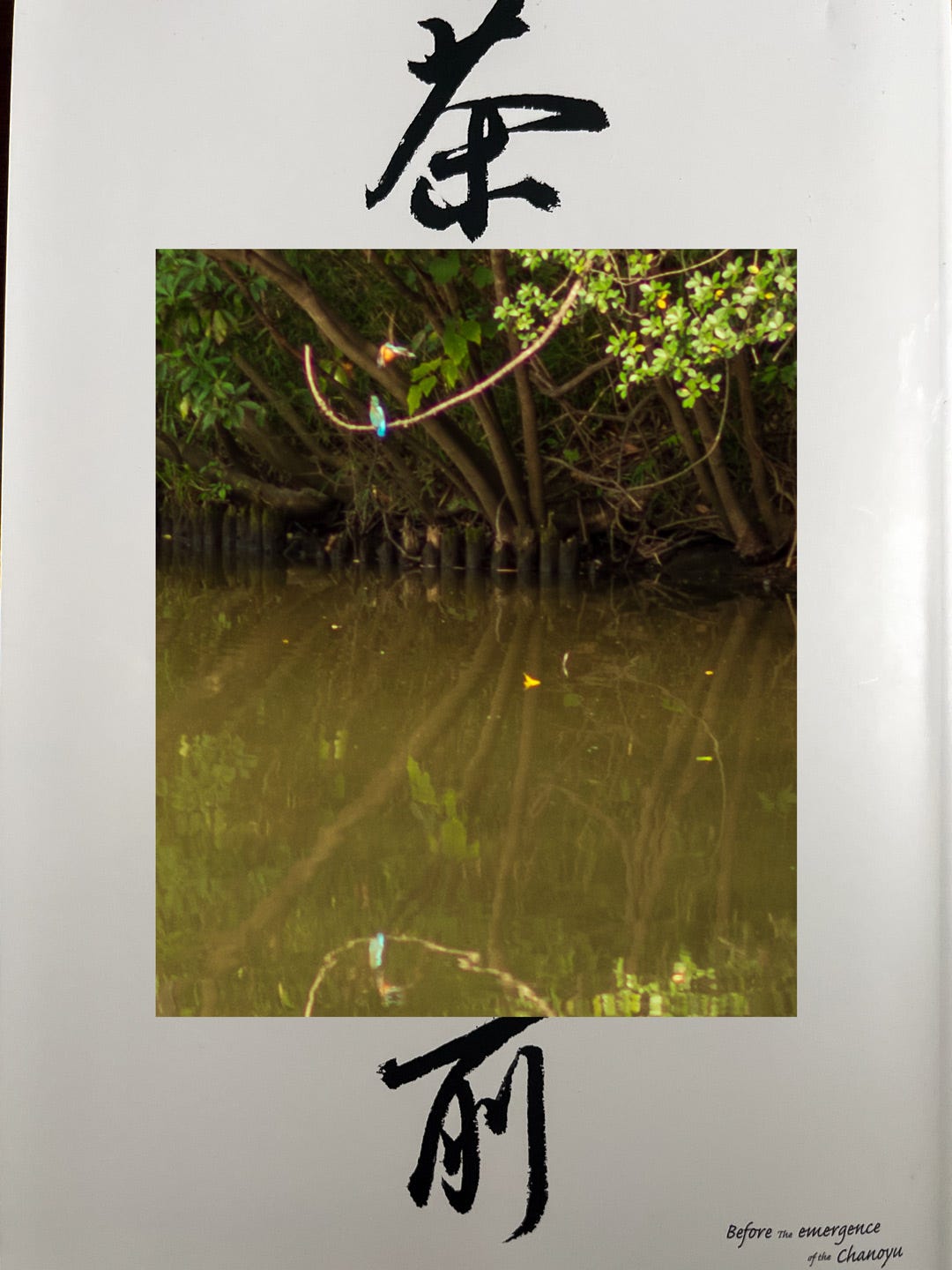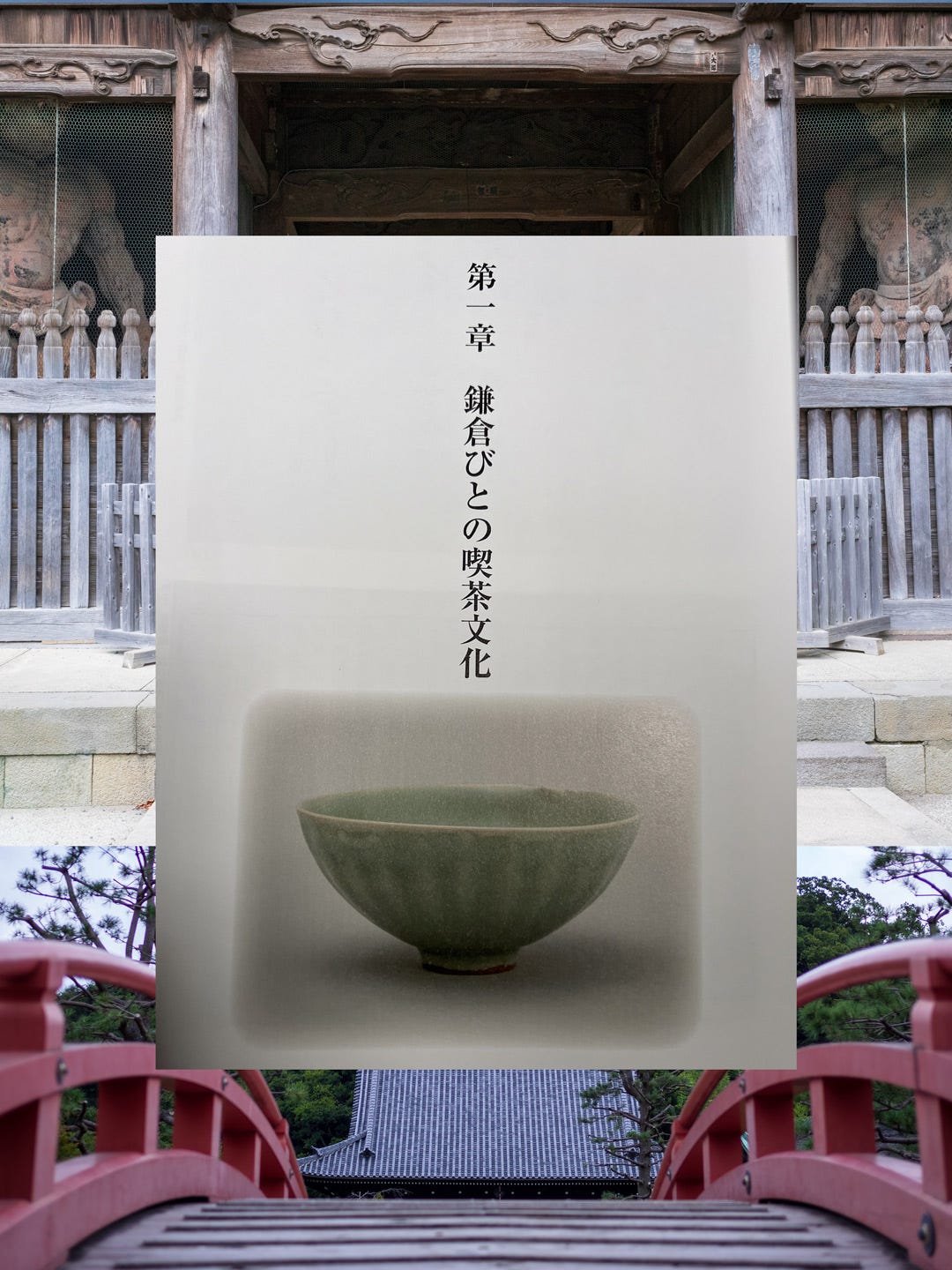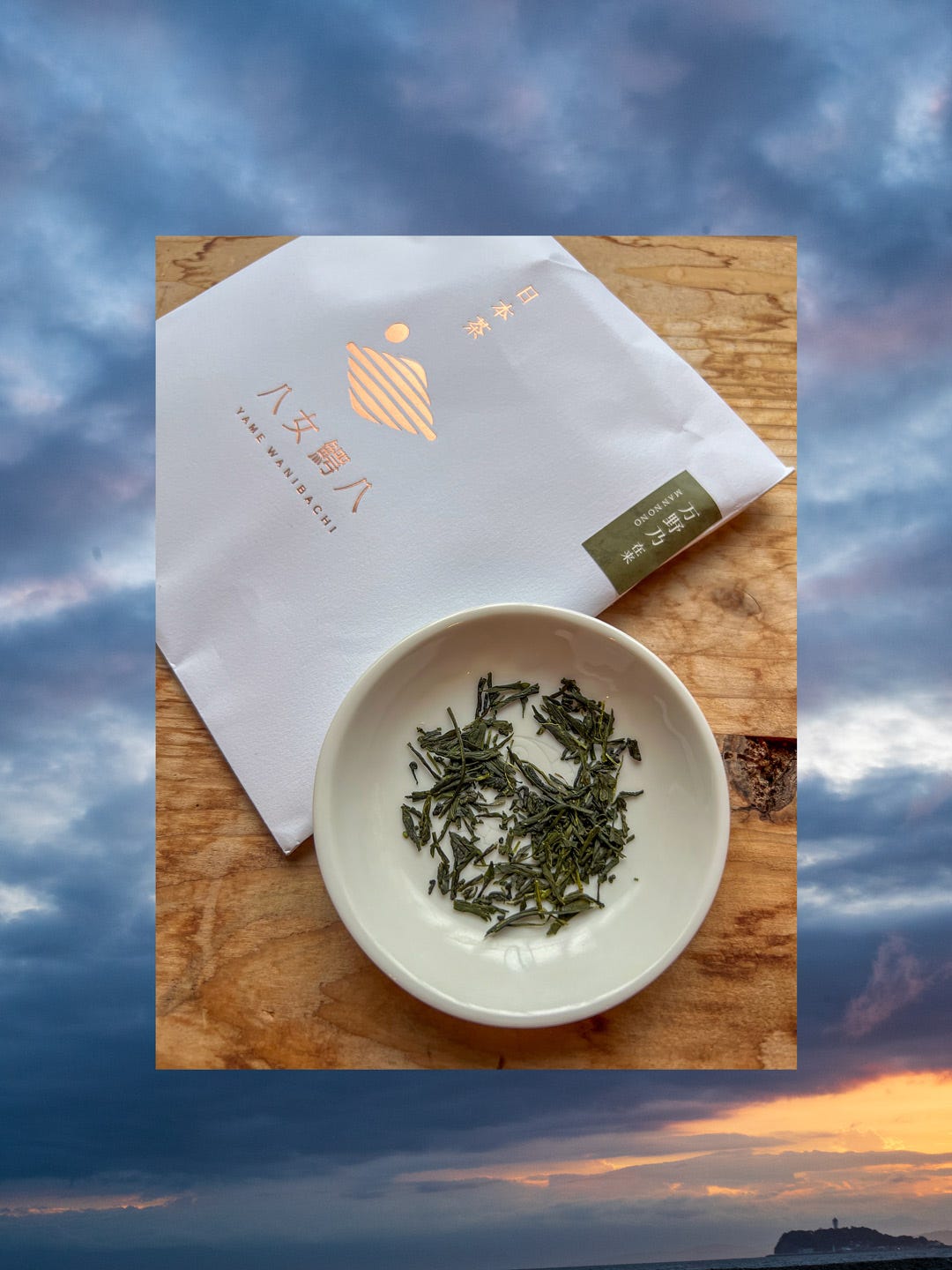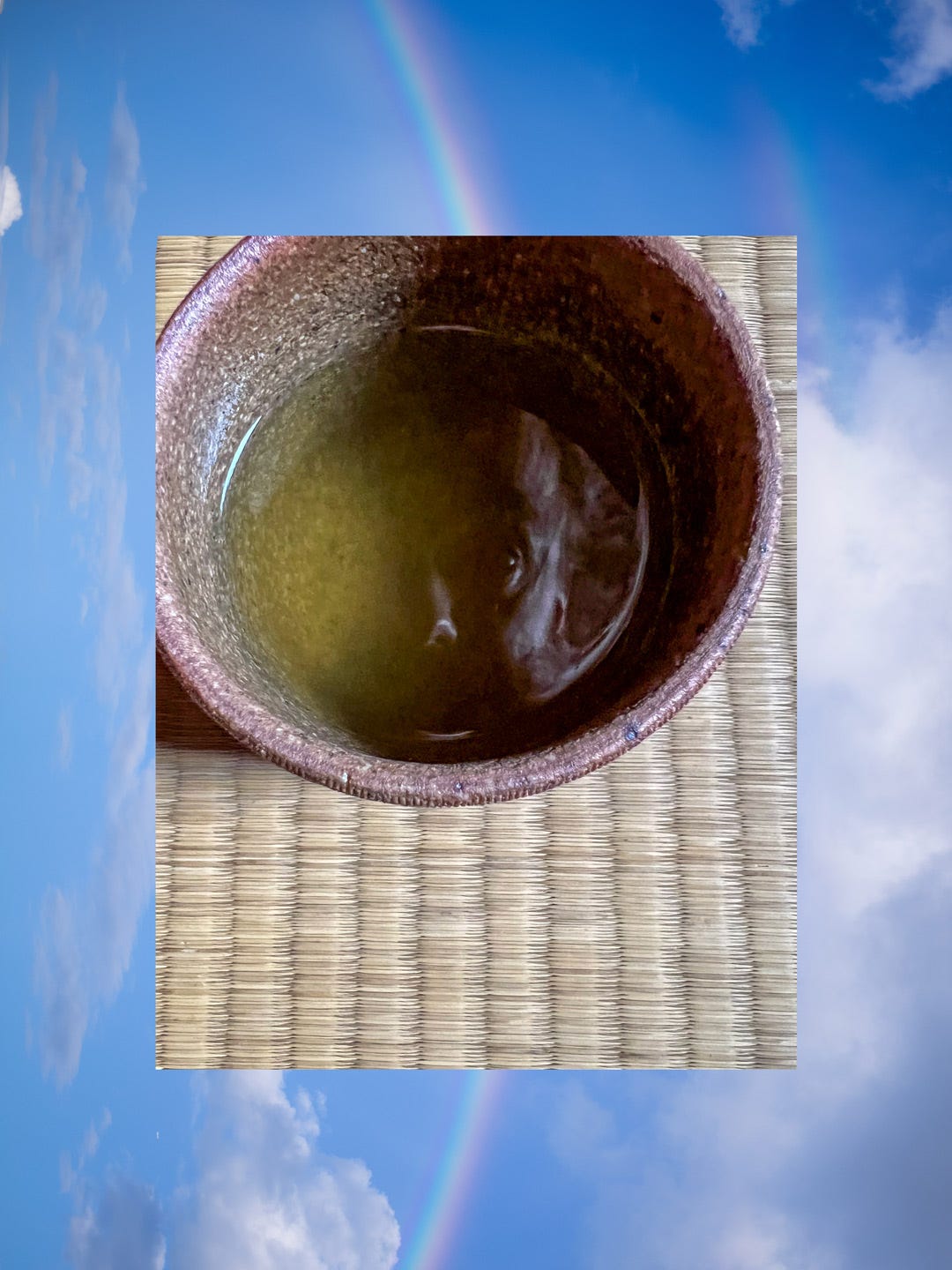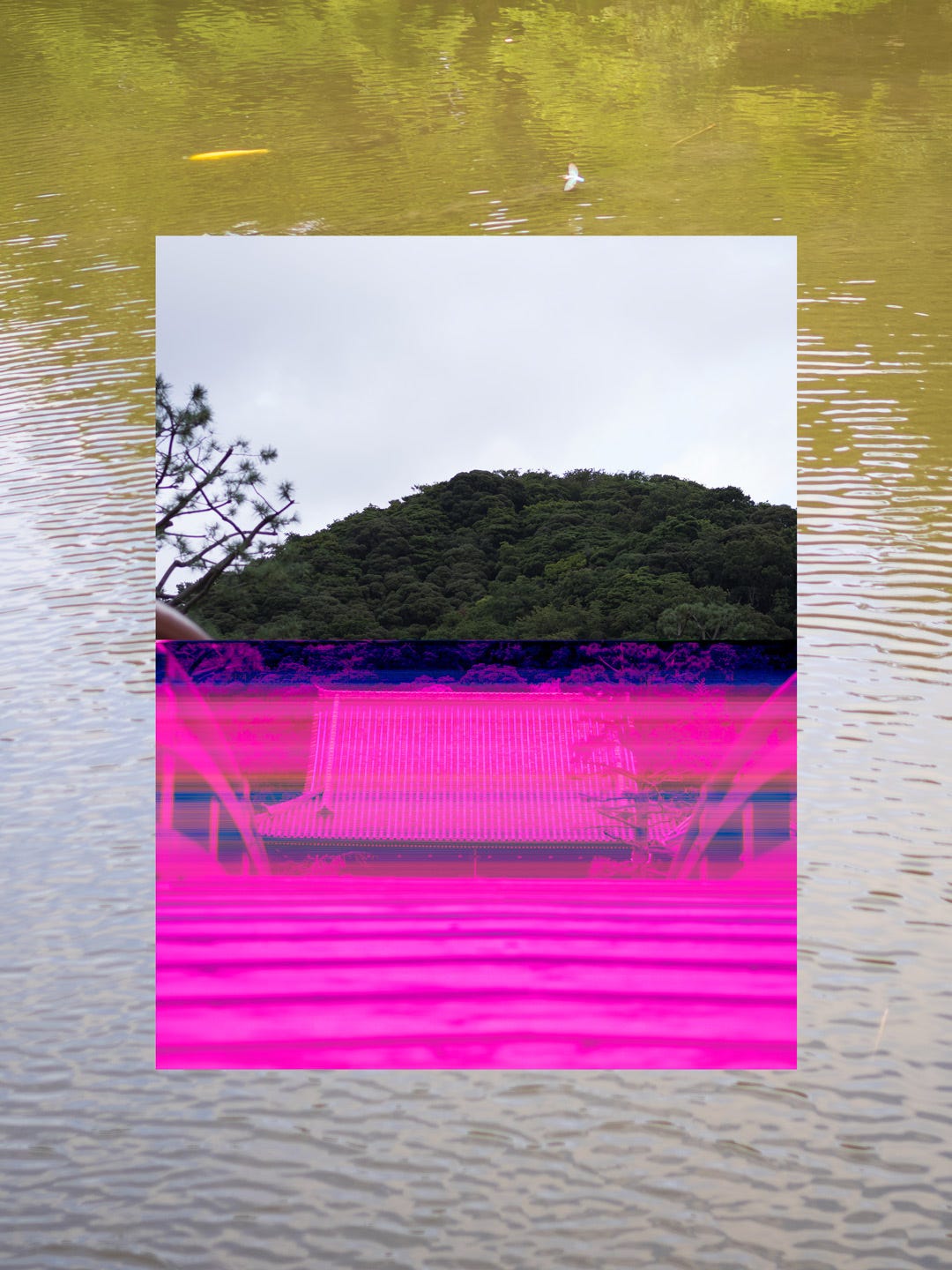Before The Ceremony: Seeing & Knowing at The Kanazawa Bunko
In which I guzzle Yame sencha and bask in the museum exhibition of my Kamakura Era dreams.
Record scratch. We’re flipping it this episode. The poem as tone setter instead of palette cleanser. Set? Go.
Hide Self View
This just in
I’ve been approved
For one more year
Here
And I complained
Can you imagine?
I can.
I did.
This place where mosquitoes
seem to bite everyone
but leave me be.
Drinking cold Hojicha
and laughing with the cosmos
at my hubris.
I’ve long since retreated
From the war with these urges
to slide messages
youward about the wind
pushing the lake skin
pizza dough thin
mahjong tile scattered
wrinkle of kimono dazzle
fizzling in the sun glow of sea spray.
Not so wretched
these clenched
muscle bit parts.
All just surface skaters
bile white as rice rinsed
dumped in the trough
for the snouts and shouts
of us filthy lifelong unlearners.
Why still lie about
these unironic urges
to curl my legs like shrimp spines
and just sit
like never have I ever
in those nugget dunking days
when sliding a phone numbers
on a burger receipt
was better than the moment
when they actually called?
All my unpursued explainers
when, at last, I try to speak
them kingfishers streak
Turquoise & Turmeric
across the pond, shaped
阿
‘neither arising or ceasing’
esoteric flight paths
over a carp so gold
you’d think it’s an edit.
I’m too slow a shooter
for the whole truth
to get from me to you
And so this half
cup of Hubrischa
for now, will have to do. And we’re off…
Join me as we revisit Kanazawa Bunko. Again. Third time this week. A finer-toothed comb redux of Burritt Sabin’s Kamakura: A Contemplative Guide brought me to the other Kanazawa in search of Japan’s first library. Which, you guessed it but I didn’t, just so happened to be doing an exhibit…on…I don’t know…what do you think?
What would be the one exhibition that would send a newborn juggler out into the late summer swarth, typhoons beckoning, tasks piling up, all ahead of the first week without outside assistance in double dragon management?
Or, perhaps, a better question: ya ever just find yourself awash—like chin deep—in a topic without warning? No sirens. No volunteering. Just, plop, here you are: completely obsessed. Overcome. Flooded. Can see no bottom or no top. You’re just in it. You are it. You can’t fight it anymore than you can fight the undertow when it pulls.
When was the last time you fell unexpectedly in love?
I keep dancing around it—and I appreciate your two-steppin’ with me—but I’ve also heard it described as what happens when you really see before you know. Before all the ‘ceptions and ‘pinions and ‘eelings and ‘isms come between you and that which you’ve just encountered. There you are, seeing a pattern with your doughy little infant eyes, in reach only of your infant mind. A wonder you cannot explain. Bugging out about something you have not the language to justify.
If someone out there, anyone, can be so kind as to show me on which horizon the camera crew is hiding. I’d like to tell them they are doing a great job and if they’d just let it all go on a little longer before the big reveal, that’d be doing me a real solid.
Okay. So. The exhibition at Kanazawa Bunko “Before Tea Ceremony— Tea in Medieval Kamakura” which runs until the end of September if you’d be so inclined—is about tea during the Kamakura period. Oh you know, just the sort of thing that I WOULD LITERALLY FANTASIZE OVER IN MY MIND ON A NEAR WEEKLY BASIS OVER THE PAST 18 MONTHS. That these fantasies have now taken over the kind I have been flooded with since I was a 16-year-old overexposed to certain content, might be as radical as the topic itself.
I won’t belabor the actual exhibition at Kanazawa Bunko—or the beauty of the garden at Shomyoji, the Shingon temple that sits adjacent to the museum—because if I even try to, I’d have to start a whole new substack on that topic alone. Suffice it to say that tea (and Zen with it) arrived in Japan during the Kamakura Period and the formalized tea ceremony wouldn’t come into its own for a couple hundred years. Meaning answers to questions about what, exactly, tea looked like when it arrived and how it took root in the town I now call home, have been foremost in my mind for some time. Now I’ve seen some tea caddies dug up from down the street. Mortars, not unlike the ones grinding matcha today, unearthed from the main drag. And, most importantly, a treasure trove of documents that detail the gatherings, the price grapplings, the ware barterings, and at least one complaint by a priest about getting only one bag of Shincha.
I bought the exhibition catalog so I will have my time to review and may even try to translation parts of “Before the Emergence of Chanoyu” at some juncture. That I could see such a display at all was miraculous, especially given how much Kyoto/Uji overshadows the whole of the Japanese tea world, but it also gets me closer to the question I hope I never can fully answer but continue to ask in deeper and deeper ways all the time:
Why Kamakura?
Why does it have this hold on me? Why did all these people I jive with across so many eras come here? Why did tea and zen and the Shogun system take place here, of all places? Why did I get the same feeling I did now as I when I first came here so many years ago? Why am I now obsessed with anything and everything about it from the Buddhas to the beaches to the restaurants down the way, to the insects, to the flowers, to the shoguns themselves?
Why is this the place so many of my teachers — Terry Riley and his Raga classes, Watarai San and his Ikebana, Jesse and his Qi Gong, and the double dragons themselves—showed up to at the same time?
Call me essentialist if you must. Call me a maniac if you’d be so kind. Call me a guy with what passes for a big-gulp size of zairai yame sencha in my ruggedly flossy hoshino-yaki mug courtesy of Maruta San. There may be yet another typhoon fee-fi-fo-fumming outside and the storm doors but I’m inside learning to tip-tap-toe ever slower. Takaki San of Wanibachi straight up deemed his first batch this year not up to par so he sent me the whole kilo-ish order all over again. See what I mean about how these new wave nihoncha surfers are paddling out?
I suspect I’ll be riding these zairai swells for a while, a growing seed-propagated champ in a world of cuttings. This one is called Mannono—and described as a harvest of 70-year old plants with a rebellious streak. Betana Kun of A.Drop fame turned me on to Wanibachi and I’m pumped to see what else the latest shipment holds.
Why do they never say “breakneck enthusiasm loves company” too?
I pray that all of you are struck by lightning bolts of sudden and overwhelmingly electrifying obsession with something unexpected very soon. Jolted. Then we can laugh at trying to express it together. Until the thunder rumbles your way, here’s a palette cleanser anyway…
Show Self View I am no writer just a ship minder on a cosmic current with penned-up beings getting their licks in. The poet & his silence & slurps. The journalist & his facts & fractions. The traveler & his notebook & jorts. The scholar & his footnotes & hunches. The novelist & his tunnels & terror. The dispatcher & his chains & leaks. The critic & his blindness & pride. The ghost & his sell-flesh-ness & peace. The stenographer & his record & clench. The reader & his retreats & touchy feels. And I’ve promised I would never apologize for them here and I won’t break that promise now and then you can maybe start to see all the edits the sky and the earth have revised out of me. And you’ll understand why the only thing to pair with sencha has always been flattery.

